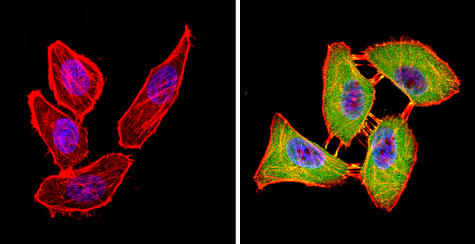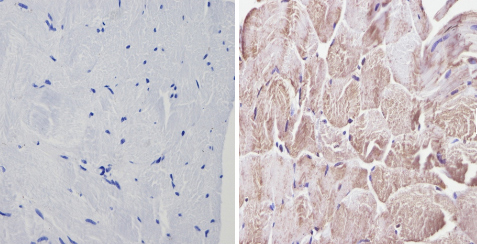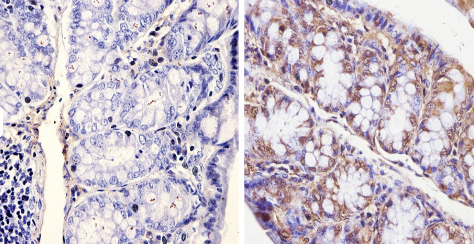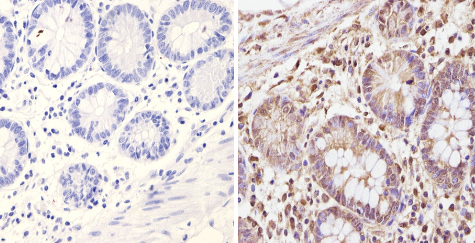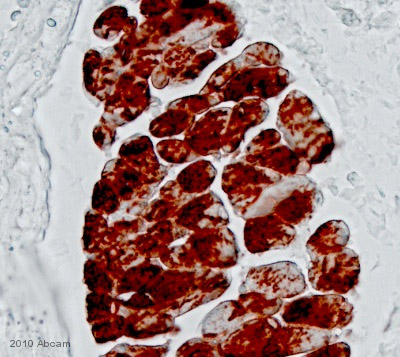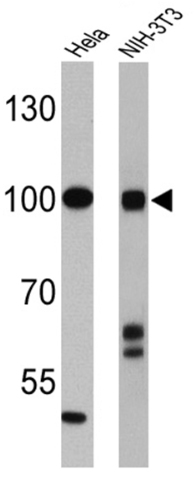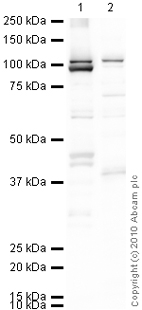Anti-KAT13D / CLOCK antibody - ChIP Grade
| Name | Anti-KAT13D / CLOCK antibody - ChIP Grade |
|---|---|
| Supplier | Abcam |
| Catalog | ab3517 |
| Prices | $400.00 |
| Sizes | 200 µl |
| Host | Rabbit |
| Clonality | Polyclonal |
| Isotype | IgG |
| Applications | IHC-P IHC-F WB EMSA ChIP ICC/IF ICC/IF |
| Species Reactivities | Mouse, Rat, Hamster, Human |
| Antigen | Synthetic peptide corresponding to Mouse KAT13D/ CLOCK aa 11-30 |
| Description | Rabbit Polyclonal |
| Gene | CLOCK |
| Conjugate | Unconjugated |
| Supplier Page | Shop |
Product images
Product References
Epigenetic suppression of mouse Per2 expression in the suprachiasmatic nucleus by - Epigenetic suppression of mouse Per2 expression in the suprachiasmatic nucleus by
Mori K, Iijima N, Higo S, Aikawa S, Matsuo I, Takumi K, Sakamoto A, Ozawa H. PLoS One. 2014 Jan 31;9(1):e87319.
Expressions of tight junction proteins Occludin and Claudin-1 are under the - Expressions of tight junction proteins Occludin and Claudin-1 are under the
Kyoko OO, Kono H, Ishimaru K, Miyake K, Kubota T, Ogawa H, Okumura K, Shibata S, Nakao A. PLoS One. 2014 May 20;9(5):e98016.
Linking the circadian rhythm gene Arntl2 to interleukin 21 expression in type 1 - Linking the circadian rhythm gene Arntl2 to interleukin 21 expression in type 1
Lebailly B, He C, Rogner UC. Diabetes. 2014 Jun;63(6):2148-57.
Circadian clock function is disrupted by environmental tobacco/cigarette smoke, - Circadian clock function is disrupted by environmental tobacco/cigarette smoke,
Hwang JW, Sundar IK, Yao H, Sellix MT, Rahman I. FASEB J. 2014 Jan;28(1):176-94.
A non-canonical E-box within the MyoD core enhancer is necessary for circadian - A non-canonical E-box within the MyoD core enhancer is necessary for circadian
Zhang X, Patel SP, McCarthy JJ, Rabchevsky AG, Goldhamer DJ, Esser KA. Nucleic Acids Res. 2012 Apr;40(8):3419-30.
Non-invasive exploration of neonatal gastric epithelium by using exfoliated - Non-invasive exploration of neonatal gastric epithelium by using exfoliated
Kaeffer B, Legrand A, Moyon T, Frondas-Chauty A, Billard H, Guzman-Quevedo O, Darmaun D, Roze JC. PLoS One. 2011;6(10):e25562.
CLOCK and BMAL1 regulate MyoD and are necessary for maintenance of skeletal - CLOCK and BMAL1 regulate MyoD and are necessary for maintenance of skeletal
Andrews JL, Zhang X, McCarthy JJ, McDearmon EL, Hornberger TA, Russell B, Campbell KS, Arbogast S, Reid MB, Walker JR, Hogenesch JB, Takahashi JS, Esser KA. Proc Natl Acad Sci U S A. 2010 Nov 2;107(44):19090-5. doi:
Myocyte remodeling in response to hypertrophic stimuli requires nucleocytoplasmic - Myocyte remodeling in response to hypertrophic stimuli requires nucleocytoplasmic
Boateng SY, Senyo SE, Qi L, Goldspink PH, Russell B. J Mol Cell Cardiol. 2009 Oct;47(4):426-35.
Circadian timing in the lung; a specific role for bronchiolar epithelial cells. - Circadian timing in the lung; a specific role for bronchiolar epithelial cells.
Gibbs JE, Beesley S, Plumb J, Singh D, Farrow S, Ray DW, Loudon AS. Endocrinology. 2009 Jan;150(1):268-76.
The circadian protein Clock localizes to the sarcomeric Z-disk and is a sensor of - The circadian protein Clock localizes to the sarcomeric Z-disk and is a sensor of
Qi L, Boateng SY. Biochem Biophys Res Commun. 2006 Dec 29;351(4):1054-9. Epub 2006 Nov 7.
